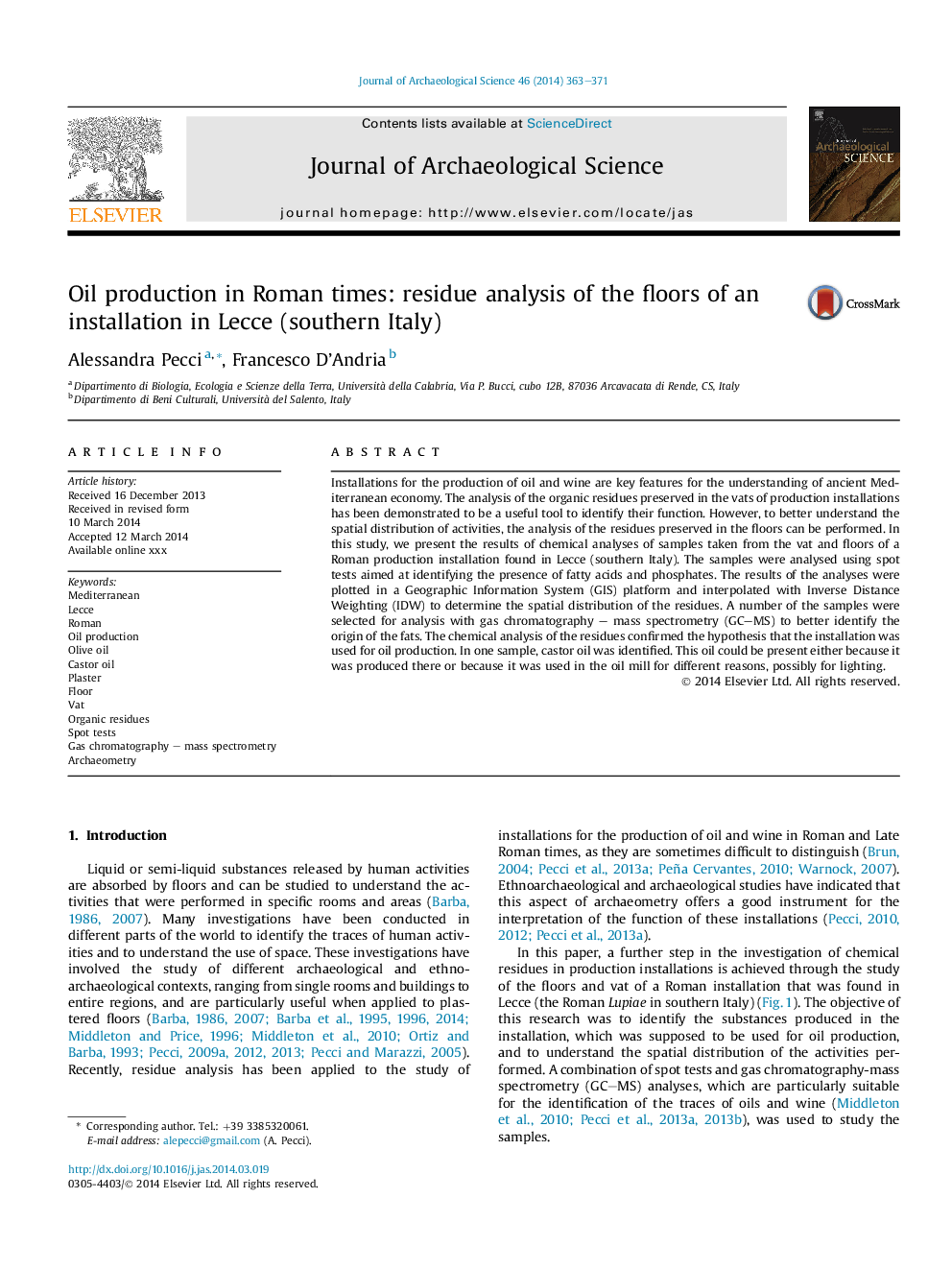| کد مقاله | کد نشریه | سال انتشار | مقاله انگلیسی | نسخه تمام متن |
|---|---|---|---|---|
| 7443555 | 1483914 | 2014 | 9 صفحه PDF | دانلود رایگان |
عنوان انگلیسی مقاله ISI
Oil production in Roman times: residue analysis of the floors of an installation in Lecce (southern Italy)
ترجمه فارسی عنوان
تولید نفت در دوران روم: تجزیه و تحلیل باقی مانده از کف نصب در لچه (جنوب ایتالیا)
دانلود مقاله + سفارش ترجمه
دانلود مقاله ISI انگلیسی
رایگان برای ایرانیان
کلمات کلیدی
مدیترانه، لچه روم تولید نفت، روغن زیتون، روغن کرچک، گچ، کف، وات، بقایای ارگانیک، تست نقطه، کروماتوگرافی گاز â ؟؟ طیف سنجی جرمی، باستانشناسی،
Archaeometry - باستانشناسیOrganic residues - بقایای ارگانیکspot tests - تست نقطهOil production - تولید نفتOlive oil - روغن زیتونCastor oil - روغن کرچکRoman - رومیVAT - مالیات بر ارزش افزودهMediterranean - مدیترانه gas chromatography – mass spectrometry - کروماتوگرافی گاز - طیف سنج جرمیFloor - کفPlaster - گچ
موضوعات مرتبط
مهندسی و علوم پایه
مهندسی مواد
دانش مواد (عمومی)
چکیده انگلیسی
Installations for the production of oil and wine are key features for the understanding of ancient Mediterranean economy. The analysis of the organic residues preserved in the vats of production installations has been demonstrated to be a useful tool to identify their function. However, to better understand the spatial distribution of activities, the analysis of the residues preserved in the floors can be performed. In this study, we present the results of chemical analyses of samples taken from the vat and floors of a Roman production installation found in Lecce (southern Italy). The samples were analysed using spot tests aimed at identifying the presence of fatty acids and phosphates. The results of the analyses were plotted in a Geographic Information System (GIS) platform and interpolated with Inverse Distance Weighting (IDW) to determine the spatial distribution of the residues. A number of the samples were selected for analysis with gas chromatography - mass spectrometry (GC-MS) to better identify the origin of the fats. The chemical analysis of the residues confirmed the hypothesis that the installation was used for oil production. In one sample, castor oil was identified. This oil could be present either because it was produced there or because it was used in the oil mill for different reasons, possibly for lighting.
ناشر
Database: Elsevier - ScienceDirect (ساینس دایرکت)
Journal: Journal of Archaeological Science - Volume 46, June 2014, Pages 363-371
Journal: Journal of Archaeological Science - Volume 46, June 2014, Pages 363-371
نویسندگان
Alessandra Pecci, Francesco D'Andria,
